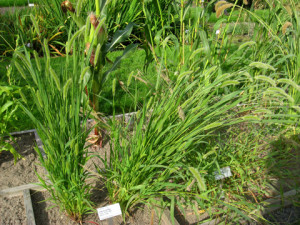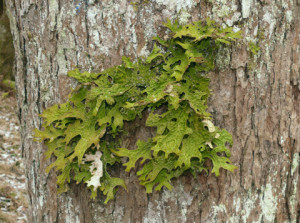WALNUT CREEK, Calif.—According to roadside signs, the number of burgers served has eclipsed the billion mark, while the U.S. Department of Energy (DOE) Joint Genome Institute (JGI) will now serve up trillions of nucleotides of information from scores of newly-selected projects geared to feed the data-hungry worldwide research community.
The 2012 Community Sequencing Program (CSP) call invited researchers to submit proposals for projects that advance capabilities in fields such as plant-microbe interactions, microbes involved in carbon capture and greenhouse gas emission, and metagenomics—the characterization of complex collections of microbes from particular environmental niches. The total allocation for the coming year’s CSP portfolio will exceed 30 trillion bases (terabases or Tb), a 100-fold increase compared with just two years ago, when just a third of a terabase was allocated to more than 70 projects. This amounts to the equivalent of at least 10,000 human genomes in data.

Studying the microbial communities of McMurdo Dry Valleys of Antartica is a project proposed by the University of Delaware’s Craig Cary and the University of Waikato’s Charles Lee in New Zealand. (Image by Robert Simmon, based on data provided by the NASA GSFC Oceans and Ice Branch and the Landsat 7 Science Team)
“These selections truly take advantage of the DOE JGI’s massive-scale sequencing and data analysis capabilities,” said Eddy Rubin, DOE JGI Director. “The projects span the globe and the unexplored branches of the tree of life, and promise to yield a better understanding of the interplay between climate, ecosystem and organism. Still other projects are targeting improvements in biofuel feedstock production, focusing on the potential of microorganisms to improve feedstock growth and prevent devastating diseases that hinder yields.”
A total of 41 CSP proposals were approved from the 152 submitted, culled from the 188 letters of intent originally received. The projects were then reviewed and approved by an outside review panel before being vetted by the DOE.
One of single largest project comes from Jeff Dangl at the University of North Carolina and his colleagues and focuses on the rhizosphere, that narrow region where microbes in the soil colonize and interact with plant roots. The importance of rhizosphere microbial communities for plant growth and success cannot be overstated. “The distinctive ‘terroir’ that flavors wine, the yield of maize and other crops, and the productivity of any plant community rely in part on the respective rhizosphere microbiome,” they wrote in their proposal. “The microbiome is most simply viewed as an extension of each plant’s genome; we do not know any plant genome’s full functional capacity until we also know the functional capacity and the drivers governing assembly of its associated microbiome.” The Dangl team seeks to apply the genetic and genomic information toward applications in bioenergy and carbon cycling research. They propose to study the rhizosphere microbiomes of maize, Arabidopsis and a mustard relative known commonly as Drummond’s rockcress, as well as potential biofuel crop Miscanthus and wild prairie grasses, to understand the plant genetics involved in determining the microbial communities associated with plant species.
Another plant project involves Casuarina trees, which are able to tolerate soils laden with salt and heavy metals due to Casuarina symbiosis with Frankia bacteria. As these trees have the potential to serve as biomass sources in tropical and subtropical regions of the world, the team led by Laurent Laplaze from the French institute IRD-Montpellier proposes to use deep sequencing to analyze gene expression changes in the roots and nodules of the Casuarina trees and learn more about how these plant-microbe interactions influence nitrogen fixation and carbon sequestration.

Proposed by Cornell University’s Thomas Brutnell and colleagues, the green foxtail Setaria viridis is a model system for studying C4 bioenergy grasses (Daderot/Wikimedia Commons)
The first genomic characterization of a microbial community resulted from a collaboration between the DOE JGI and Jill Banfield at the University of California, Berkeley and her colleagues and involved samples from a U.S. Environmental Protection Agency Iron Mountain Superfund site in Northern California. Now Banfield and her colleagues propose to recover genomes from subsurface microbial communities at the DOE Integrated Field Research Challenge bioremediation research site at Rifle, Colorado. They will generate, initially, a terabase of sequence to identify novel rare microbes that might be useful for the environmental cleanup of metals and radionuclides, and which may also lend insight into subsurface carbon sequestration.
“One of the challenges that has held back environmental genomics, has been the inability to sample adequately and assemble genomes from complex environments,” Rubin said. “With recent advances in sequencing technologies and assembly algorithms developed by DOE JGI and others, it has become tractable.”
Another terabase-sized metagenome project comes from Craig Cary at the University of Delaware and Charles Lee at the University of Waikato in New Zealand. Their plan focuses on the microbial communities in the McMurdo Dry Valley system of Antarctica. Considered to be among the harshest and most extreme environments on the planet with low water and nutrient levels paired with high salt and ultraviolet radiation levels, the team seeks to understand how the carbon cycle plays out in this ecosystem. Additionally, the microbes in this environment may offer insight into bioremediation applications for cold ecosystems.
Moving away from studies set along the equator and at the poles, a team led by Michael Pester from the University of Vienna in Austria proposed one of the CSP 2012 portfolio’s smaller sequencing projects. They propose to work with roughly 100 Gb of metagenome and metatranscriptome (the complex region of the complete genetic code that is transcribed into RNA molecules and provides information on gene expression and gene function) sequence to study the greenhouse gas emissions from the microbial communities that reside in peatlands, a significant carbon sink. The researchers noted that peat soil contains methane-producing organisms whose emissions are mitigated by poorly-studied sulfate reducing microbes.
Just as the ongoing Genomic Encyclopedia of Bacteria and Archaea project aims to fill in gaps in microbial knowledge, a team led by Joseph Spatafora at Oregon State University and Jason Stajich at University of California at Riverside is planning to fill in gaps in the Fungal Tree of Life by sequencing 1,000 fungal genomes over the next five years, providing at least two reference genomes for each of the 577 recognized families classified under Fungi. “This [project] has the core goal of providing reference information to leverage all subsequent studies relevant to fungal biology,” Spatafora and his colleagues wrote in their proposal. “By providing a reference database of fungal genome diversity, it will be relevant to any sequencing study of plant-microbe interactions, of microbial emission and capture of greenhouse gasses, or of environmental metagenomic sequencing.” Though more than 100 fungal genomes are now available, the team added, acknowledging the DOE JGI’s role in these efforts, currently nearly three-quarters of these families have not yet been sequenced.

Sequencing the lichen Lobaria pulmonaria was proposed by University of Iceland’s Olafur Andresson. (Bernd Haynold/Wikimedia Commons)
Another fungal project approved this year was proposed by U.S. Department of Agriculture researcher Jo Anne Crouch and involves several species of the grass-infecting fungus Colletotrichum. As more grasses are explored as candidate bioenergy feedstocks, strategies that defend against fungal pathogens that may reduce plant biomass and thus yields of cellulosic biofuels are of particular interest. Additionally, novel enzymes in these fungal genomes may have industrial applications in the biomass pretreatment processes.
In an indication of the increasing use of sequencing to study whole biological systems rather than individual organisms, more than half the approved proposals include sequencing of multi-organism samples either instead of or in addition to individual genomes. Of the proposals that include individual genome sequencing, nine address plant genomes; six are fungal projects; and eight are microbial projects, five of which involve sequencing the genomes of single cells.
“Through these diverse and challenging projects, the DOE JGI’s Community Sequencing Program will continue to provide the scientific community with high-throughput sequencing for projects relevant to DOE’s scientific and energy-related missions,” DOE JGI Director Rubin said.
For the complete list of CSP 2012 sequencing projects, see: http://www.jgi.doe.gov/sequencing/cspseqplans2012.html. Follow the progress of these projects on Twitter and Facebook.
Supported by the Office of Biological and Environmental Research in the DOE Office of Science, the DOE JGI’s Community Sequencing Program enables scientists from universities and national laboratories around the world to probe the hidden world of microbes and plants for innovative solutions to the nation’s major challenges in energy, climate, and environment.